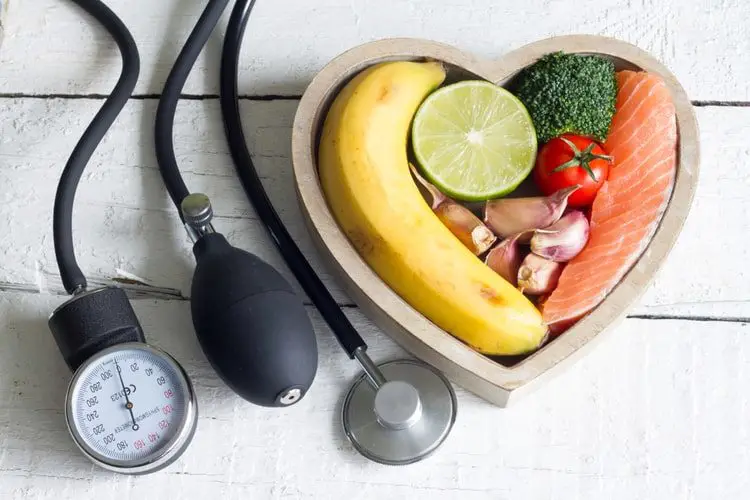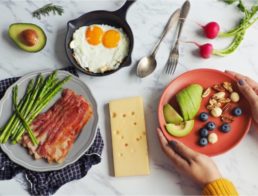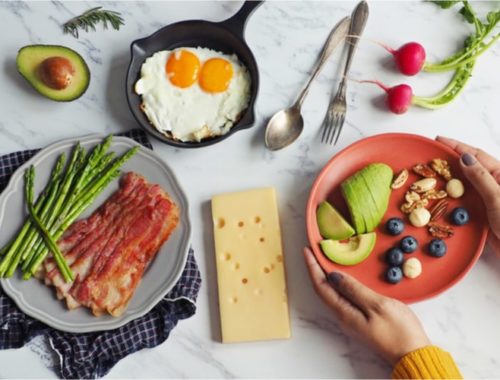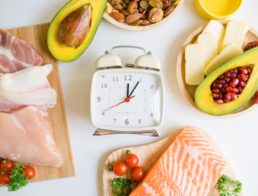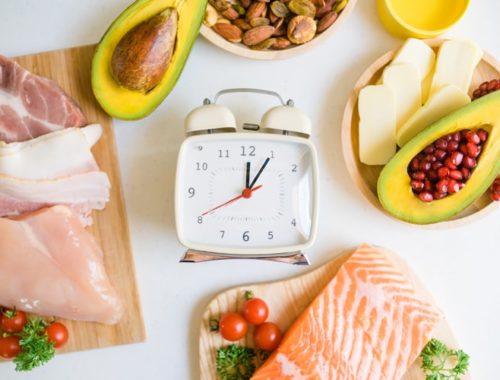High blood pressure, or hypertension, is known as the “silent killer” because it often goes unnoticed and can worsen over time. Having high blood pressure can negatively affect your heart, brain, kidneys and eyes if left untreated. More specifically, high blood pressure can increase your risk of stroke, vision loss, heart attack, heart failure, kidney failure and sexual dysfunction (1).
In this article, we will discuss 8 easy steps to lowering your blood pressure so that you can have better control over your health. High blood pressure can be improved (or prevented in the first place) with healthy lifestyle habits and keeping yourself “in the know” about your health.
1. See your doctor regularly
Most doctor’s offices take your blood pressure every time you come in for an appointment, that is, if you actually attend your appointments. For people who have regular doctor visits, high blood pressure can be caught early. On the other hand, for those who put off regular check-ups, know that hypertension can progress without you noticing. Many people, like my own mother, a nurse, put off going to the doctor and landed herself a trip to the emergency room with a hypertensive emergency. You can even have high blood pressure as a young adult, so make sure you have a primary care provider (even if you feel great).
2. Get a blood pressure monitor
One of the most important aspects to lowering your blood pressure is to know your numbers. Blood pressure monitors help you track how your blood pressure trends at different times of the day and at different times of the week. Certain activities can affect your blood pressure as well, so make sure you check your blood pressure as your doctor recommends. Above all, keep a log to track your blood pressure recordings. Click here for more information about how to understand your blood pressure readings. Knowing your numbers can save your life!
3. Take your medications as instructed
While it may seem obvious to some, it is extremely important that you take your blood pressure medications as instructed by your doctor. Skipping pills, forgetting to refill your prescription or cutting your pills in half to extend them can wreak havoc on your blood pressure. If you take your blood pressure medication as prescribed, then you can maximize the medication’s benefits.
4. Know your daily limit (of sodium)
Your diet can have a huge impact on blood pressure control. The key ingredient to watch out for if you have hypertension (or even if you don’t) is sodium. Research shows that diets that control the sodium can help manage your blood pressure. Sodium is a mineral we get in the foods we eat. It is a component of salt, so be sure to look for forms of “sodium” and “salt” on food labels. To learn more about food label reading for lowering blood pressure, see step 5. If you have high blood pressure, then limit sodium to 1500 milligrams per day. Otherwise, if you don’t have high blood pressure, then limit sodium to 2300 milligrams per day.
5. Learn to read the food label
If you’re not one to read food labels, then it’s time to start. Food label reading for lowering blood pressure can start at the “Ingredients” list. In the ingredients list, look for sodium or salt keywords. You will notice that sodium is in lots of different foods! Since you can’t completely avoid sodium, it is essential that you control the amount you consume. So, the next place to look is the “Nutrition Facts” label. On this label, sodium is listed in milligrams and as a percentage. Foods that are “low sodium foods” have less than 140 milligrams of sodium per serving. Choose low sodium foods more often!
6. Learn which foods are high and low in sodium
Many processed foods are high in sodium, which can raise your blood pressure over long term consumption. On the other hand, other foods are naturally low in sodium, so you can use them to your advantage and help you control your blood pressure. If you come across a food that does not have a handy food label or ingredients list, then keep these general guidelines in mind:
High Sodium Foods (limit or avoid) |
Low Sodium Foods (emphasize or add) |
|
|
*While these foods can be part of a healthy diet to manage hypertension, portion control should be conducted.
7. Try more home cooking
As you can see in the chart above, fast food, restaurant food and take-out typically contains lots of sodium or salt. Food from such places is often seasoned for taste, rather than cooked for health. Also, since these foods are prepared by someone else, you may not be able to customize your take-out meals to your health needs. If you want to have better control over your diet for lowering blood pressure, then try preparing more meals at home. This is where you can control what ingredients you use and how much sodium or salt you add to the meal.
8. Spice it up with non-sodium ingredients
In addition to using low sodium foods, you can reduce the overall sodium in your diet by flavoring your food with non-sodium spices. Learn to love the flavors of your low sodium foods and spices. Here’s a list of great spices to season your food that can help keep your blood pressure in check:
- Fresh citrus juice & zest (i.e. lemon juice, lime zest)
- No salt added mixes (i.e. the Mrs. Dash collection)
- Black pepper
- Plain garlic powder (not garlic salt)
- Onion powder
- Mustard seed
- Chili powder
- Fresh herbs like parsley, cilantro, basil, oregano, dill
- Fresh ginger
- Cinnamon
- Vinegar (i.e. red wine vinegar)
How will you lower your blood pressure?
As you can see from the list above, there are many ways to lower your blood pressure. However, managing blood pressure should be a lifelong goal for people with and without a high blood pressure diagnosis. So, as you try to lower your blood pressure, make sure to include your family and the ones you love so that they too can live a healthier lifestyle.
